Something terribly wrong happened during the decking installation. Your deck looks shiny and is almost too slippery to walk on. Yes, end sealer was used instead of Ipe Oil.
We’ve actually seen this happen before. I’m going to help you resolve the issue so you can enjoy your deck the way it should.
This is not going to be an easy process, but your deck can be saved! Here’s what you need to do if you spilled end sealer onto your deck:
- Pressure wash the decking using a fan tip until you can break through the wax to the wood. You will have to pressure wash around 1000 to 1500 psi.
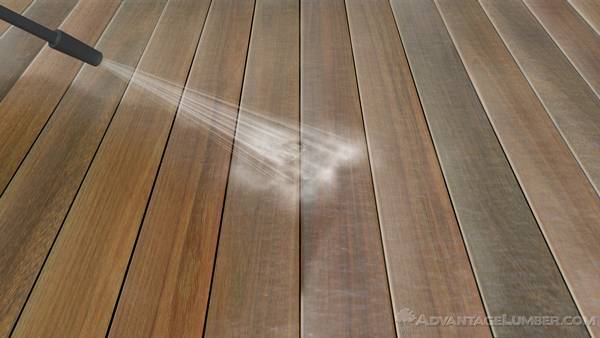
Pressure washing helps break up the end sealer on the surface and prepares it for sanding. - Next, sand the entire surface.
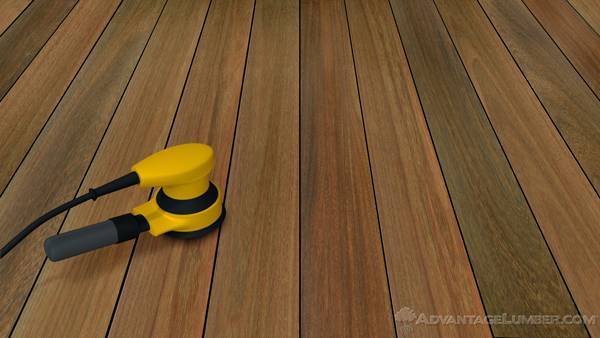
Sanding helps smooth the decking and remove any remaining residue. - Then pressure wash using a fan tip to make sure all the saw dust is removed off of the material.
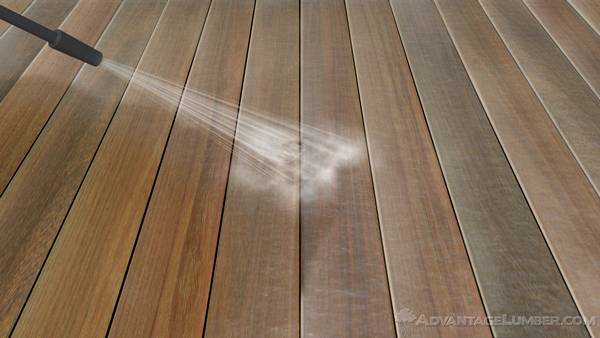
This will remove any wood dust and remaining end sealer.
After the decking has dried completely, and there’s no chance of rain in your forecast, then you take Ipe Oil and oil your deck! This will give you the rich warm colors you desire in your hardwood deck, all while protecting it from UV Rays. Make sure you oil the deck during a time when the temperature does not drop below 50 degrees Fahrenheit.
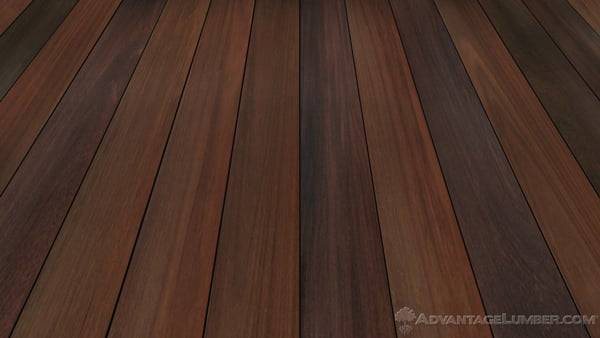
Hopefully you’ll never have to go through this again, but just remember to read the instructions before beginning any type of project!
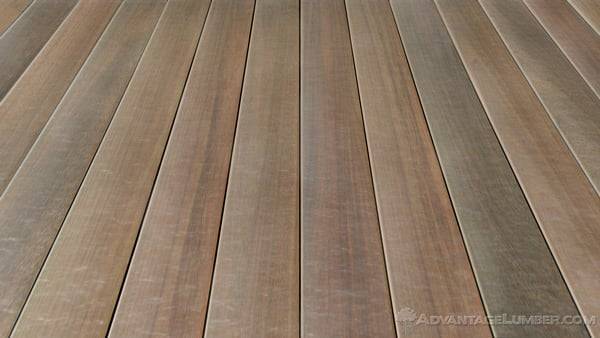
Please help us! We had our deck rebuilt with IPE wood last Fall . It was all going well until after the installer applied the oil. What happened was he sanded some of the areas where there were some high spots where the boards joined end to end. After doing that , those areas felt rough so he used a different grade of sanding pad so it wasn’t rough. Instead of just putting oil on those spots, he applied oil to the entire deck again. It was only the next day. We have surmised that it was a bad idea to put another coat of oil on so soon because the entire winter has come and gone and now it is Spring. The deck feels tacky in areas and dirt sticks to it. He doesn’t know what to do. He is telling us that you have had a lot of problems with the oil and it’s a product problem. We don’t care what the cause is, we just want to use our deck! It was very expensive and we can’t even use it! PLEASE, PLEASE, HELP !!!
Kathleen Gemmill P.S. We paid him in full !!!!!
Hi Kathleen,
We’re sorry to hear this is happening to you. We’ve heard many stories of tackiness being left behind after a deck has been oiled. Most of the time this happened because the oil was never wiped off after it was applied. If you used Ipe Oil or even Messmer’s UV Hardwood Finish, the boards must be wiped after 5 minutes of applying the oil to remove any excess. This is in the instructions of the can.
If this is your case, you can get rid of the tackiness by using the DeckWise Deck Cleaner and Brightener. These products will remove any dirt and sticky spots from your deck and bring it back to its original look when the deck boards first arrived. After you cleaned and brightened your wood, you can reapply the Ipe Oil making sure to wipe off excess.
We hope this works and if you have any other questions or need to reach out to one of sales persons for more help feel free to give us a call at 1-877-232-3915.
Thank you,
-G.Alves
I’m planning a small deck using Tigerwood. After letting the wood acclimate and using the sealer on cut ends, do you recommend oiling all surfaces of the wood prior to assembly or assemble first and then oil the exposed surface?
Oiling all surfaces prior to assembly will give you the best results, but it is not strictly necessary.
Installing 5/4 X 6 Cumaru standard deck boards in SC 15 miles from coast. Can I apply oil to decking upon it’s arrival before acclimation or wait until after acclimation? Also, what should the board space be after acclimation of this kiln dried Cumaru? There are those that go as far to say the hardwood doesn’t absorb water and gap at 1/16″. Others say that Cumaro won’t swell or shrink much at all and gap at 1/8″. Still others say best to gap at 3/16″ to 1/4″. Deck 5 ft. off the ground with plenty of ventilation facing NNE. Thank you!
You should oil the wood after acclimation, and we recommend 1/4″ gap spacing for cumaru. That larger gap spacing is especially important since kiln-dried material is not meant for outdoor use; it has a much lower moisture content than air-dried decking, so will absorb and expand more.
I want to install 1X 4 teak over an existing exterior plywood floor. The existing plywood is pressure treated but a little older. The problem is drainage as it cannot drain between the boards. I would like to install without spacing and use an adhesive. Any recomendatuions.
If we are understanding your application correctly you should not glue down deck boards directly to plywood. It would not allow for ventilation underneath the deck boards so the deck boards would cup. Our deck tiles would probably be more suitable for your application.